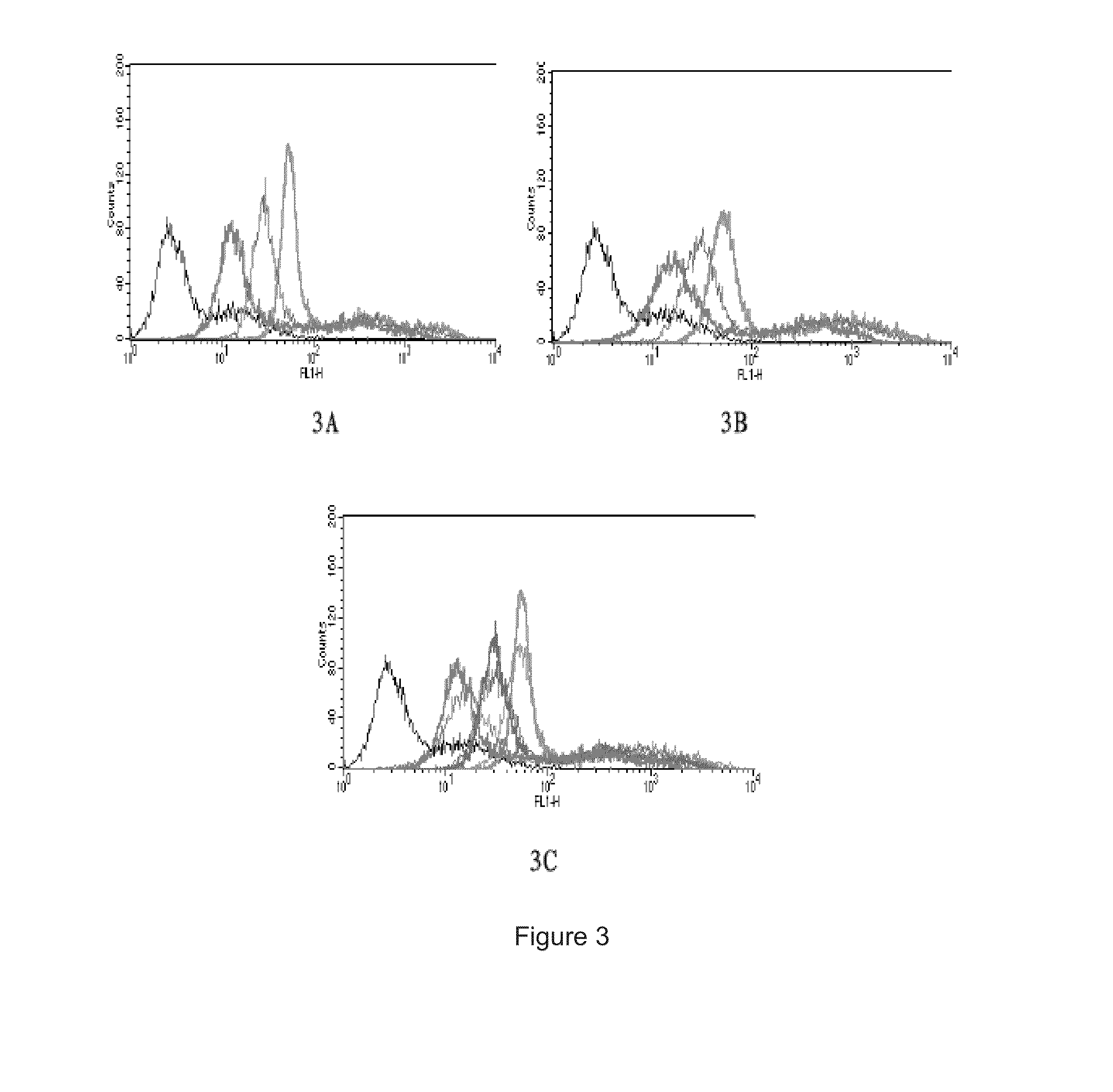Annexin v variant and its preparation and application
a technology of annexin v and variant, applied in the field of gene engineering and biotechnology, can solve the problems of difficult supply of sup>123/sup>i and sup>124/sup>i fitted for imaging in vivo, easy apoptosis, and easy to cause apoptosis, etc., and achieves high level and mass production
- Summary
- Abstract
- Description
- Claims
- Application Information
AI Technical Summary
Benefits of technology
Problems solved by technology
Method used
Image
Examples
embodiment d
[0046] the recycled product of step c and the expression vector pET28a are digested separately by restriction enzymes of Nco I and Xho I, mixing the recovered pET28a vector fragment and human DNA fragment of the variant of the annexin V by the ratio of 1:20, and connecting them by T4 DNA ligase, transforming the product into competent bacteria of E. coli Top10, screening the positive clones to identification by restriction and DNA sequencing analysis to verify the correctness of the encoding sequence.
[0047]Embodiment e: transferring the extracted recombinant expression plasmid into expression host bacteria of Escherichia coli BL21(DE3), picking the monoclon to shaking culture at 37° C. overnight, then inoculated in LB culture solution with 1:100 volume, culturing it at 37° C. for 2 hours until OD600 is approximately 0.6, adding the inducer IPTG until the final concentration is 0.5 mM, inducing expression at 37° C. for 4 hours, collecting the bacteria, to analysis by using 12% SDS-PA...
embodiment f
[0048] transferring the plasmid pET28a-His-FADD and pET28a-His-FADD (F25Y) into the host strain E. coli BL21 (DE3) to expression, and the strain grows on LB agar plates containing kanamycin 37° C. for 16 hours, then picking the monoclon to inoculate into the fresh LB liquid medium (containing 50 mg / L kanamycin), to shaking culture at 37° C. on shaking table, until the OD600 of culture fluid is about 0.6; the temperature of shaking table drops to 25° C. and continue to culturing for half an hour, and adding IPTG until which final concentration is 0.4 mM to induce the expression of target protein. After the shaking culture at 25° C. for 5 hours, the bacteria are collected.
[0049]Embodiment g: the bacteria liquid collected in step f, is resuspended with the proportion of 5 mL buffer (50 mM NH4Cl, pH 9.0) to 1 g wet bacteria, and adding lysozyme to treat the bacterial, adding sucrose until concentration is 60% after 1 hour; then diluting it in the buffer (50 mM NH4Cl, 20 mM CaCl2, pH 9.0...
embodiment i
[0053] comparison of the biological activity for detecting cell's apoptosis of the recombinant variant of the annexin V and the recombinant annexin V: Human lung carcinoma cell A549 (1.5×105) were treated by 100 ng / ml final concentration of recombinant human TRAIL for 6 hours, digested with trypsin enzyme and centrifuged for 5 minutes to collect the cells at 4° C. and 800 rpm. 400 μl recombinant annexin V or variant of the annexin V containing 0.36 nM, 0.12 nM, 0.036 nM FITC labeled is added into each sample respectively, to detect the cell's apoptosis by flow cytometry. The experiments of each concentration of recombinant annexin V or variant of the annexin V are repeated for three times, with the samples cells without label as a control. The results of the comparation of the biological activity are shown in FIG. 3, wherein, 3A: different concentrations (green: 0.36 nM; pink: 0.12 nM; Blue: 0.036 nM) of recombinant variant of the annexin V to detect cell's apoptosis; 3B: different ...
PUM
| Property | Measurement | Unit |
|---|---|---|
| volume ratio | aaaaa | aaaaa |
| pH | aaaaa | aaaaa |
| pH | aaaaa | aaaaa |
Abstract
Description
Claims
Application Information
 Login to View More
Login to View More - R&D
- Intellectual Property
- Life Sciences
- Materials
- Tech Scout
- Unparalleled Data Quality
- Higher Quality Content
- 60% Fewer Hallucinations
Browse by: Latest US Patents, China's latest patents, Technical Efficacy Thesaurus, Application Domain, Technology Topic, Popular Technical Reports.
© 2025 PatSnap. All rights reserved.Legal|Privacy policy|Modern Slavery Act Transparency Statement|Sitemap|About US| Contact US: help@patsnap.com


